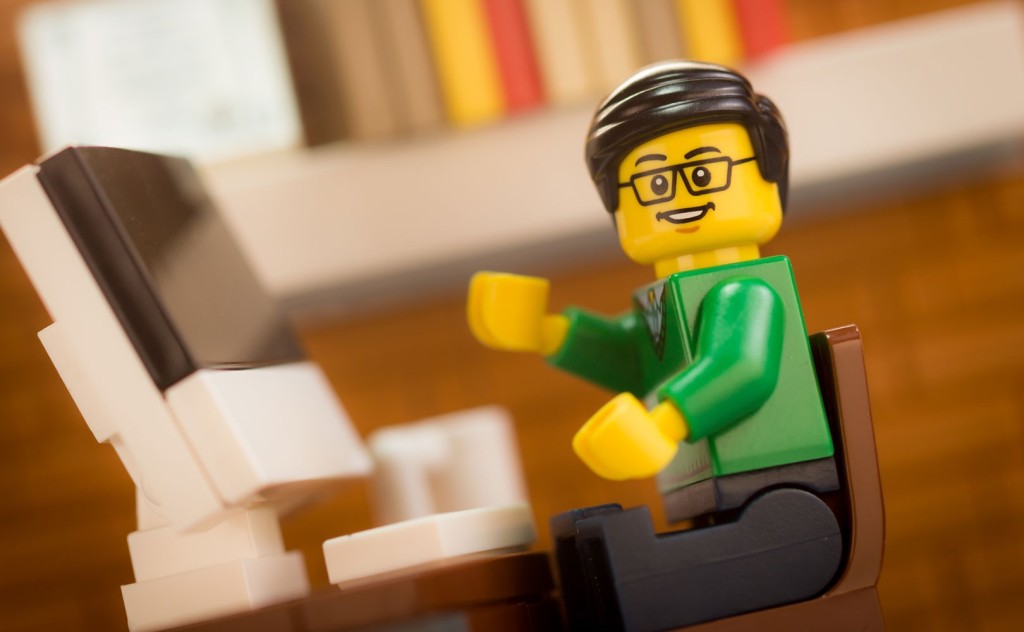How to Stay Positive at Work: 3 Helpful Strategies
There are a few misconceptions about what it means to be positive at work.
The first: positive people see the world through rose-colored glasses instead of how it really is, causing them to overlook problems. Quite the opposite, positive people respond more effectively to problems than negative people do.
“Being positive in the workplace does not mean you have your head in the sand or that you ignore unpleasant realities or problems,” Kelley School of Business Senior Lecturer Brenda Bailey-Hughes said in her LinkedIn Learning course, Being Positive at Work. “It's just that when (positive people) see a problem, they kick into solution mode rather than despair.
A second misconception: positive people are afraid of confrontation. Again, not true. Positive people are willing to give tough feedback when necessary – but they also focus on what’s right, instead of only what’s wrong.
“(Positive professionals) aren't so nicety nice that you never give anyone critical feedback, but they balance constructive criticism with praise,” Bailey-Hughes said in her course.
The result? Researchers have found positive people are more effective at work, as they think bigger, form better relationships and make better leaders.
And obviously, positive people are generally happier than negative people as well.
3 Strategies for Being More Positive at Work
All of this sounds great. But you are probably thinking, “sure, I’d love to be positive. But you don’t understand what I have to deal with at work.”
That’s true – I don’t know what you are dealing with. But, in her course, Bailey-Hughes outlined 21 strategies for embracing a more positive mindset at work. There’s a good chance some of those will help you overcome those negative thoughts and allow you to be more positive.
Here are three from her course I found particularly helpful:
1. Think through the worst-case scenario.
Ever been stuck on a problem or a worry that’s just going over and over in your mind and you can’t seem to get past it?
Here’s a great technique to use.
Say there’s something you are worried about. Ask yourself, what’s the worst-case scenario that could happen?
Many times, the worst-case scenario isn’t even that bad. Or, it’s so unlikely, you know it’s not going to happen.
More importantly, even if the worst-case scenario is bad, you can start to take steps to avoid it. If you are giving a big presentation, run through the presentation over and over under different situations, so you feel comfortable no matter what. Test your equipment and bring backup, so you know your technology will work on presentation day.
Thinking through the worst-case scenario often reveals that the stakes aren’t as high as you are making them to be. Equally important, you can start making an action plan to avoid it, which will give you added confidence.
“Our minds can dream up the best stories of humanity, or the worst,” Bailey-Hughes said in her course. “Practice the mental flexibility of challenging your own negative stories.”
2. Be mindful of your physical space.
Marie Kondo has taken the world by storm with her approach of tidying up by only having items around you that “spark joy.” The result of this is usually a decluttering of your physical space, which gives you a sense of calm throughout your day.
Bailey-Hughes suggested a similar approach to your workspace. Declutter your desk after each day. Put a plant, flowers and/or pictures of loved ones on your desk to surround yourself with things that spark joy.
Bottom line – create a space that fosters a positive mindset, not a negative one.
“It's easier to feel happy when we're in a space that sparks those feelings,” Bailey-Hughes said in her course. “Like swaddling a baby in a comforting blanket, we can swaddle ourselves in comfort and joy.”
3. Focus on not just working hard, but playing hard too.
Having a strong work ethic is something instilled into many of us when we are young. But Bailey-Hughes asks – do you have strong play ethic, too?
“Balance is the key to positivity,” she said in her course. “When was the last time you thought about your play ethic? Are you as committed to some down time as you are to your work time?”
What does that mean, exactly?
It means setting a clear boundary each day where work time ends and play time begins. Where you don’t just put all your energy into your career, instead saving some to do things like plan vacations and build relationships with your loved ones.
This won’t just make you a happier, more positive person. It’ll help you be more productive, strategic and creative in your work time, too.
Want to learn more actionable strategies for staying more positive at work? Watch Brenda Bailey-Hughes full course, Being Positive at Work, today.
Topics in her LinkedIn Learning course include how to:
Topics: Career success tips
Related articles




